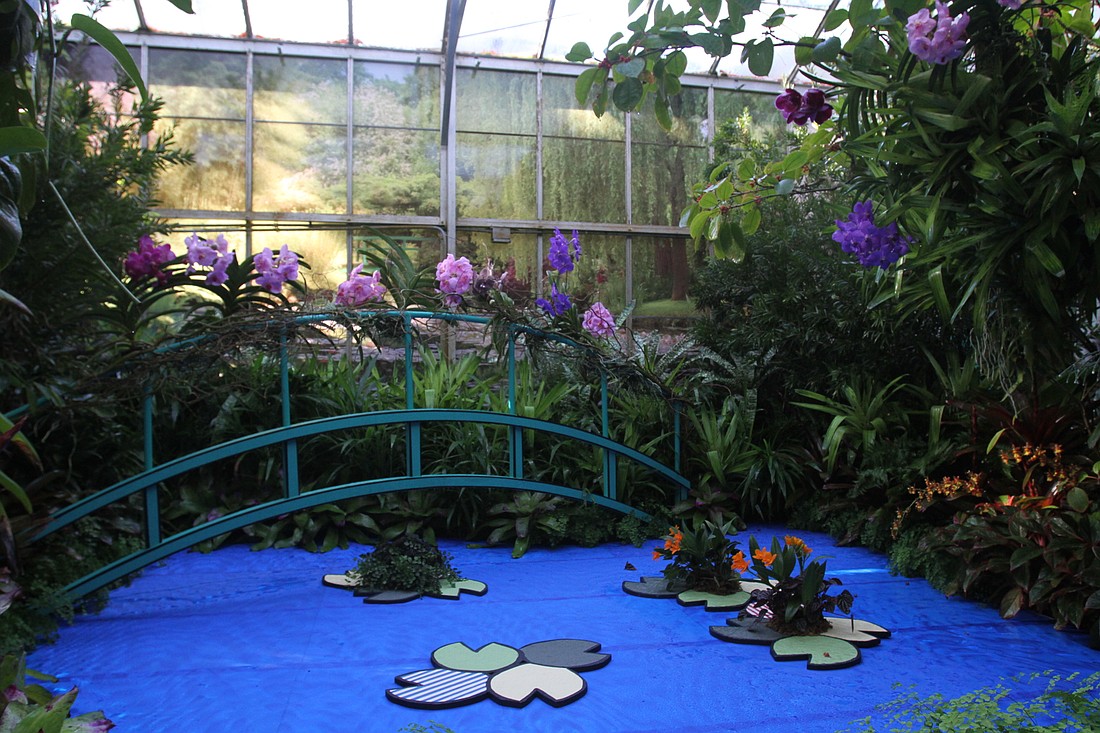- April 9, 2025
-
-
Loading

Loading

Marie Selby Botanical Gardens CEO Jennifer Rominiecki has overseen the Jean & Alfred Goldstein Exhibit series for six years now, and she is proud of the work she and her staff have put on display.
The series spotlights esteemed artists and displays their work in the context of the greenery of Selby’s botanical garden. And throughout those six years, she and curator-at-large Carol Ockman have heard requests over and over for one artist in particular — French impressionist painter Claude Monet.
It’s a natural fit at first glance. Monet did revered, vibrant work of his flower garden and water garden in Giverny, France in the 19th and 20th centuries, and many have felt it would make sense to highlight such material at Selby’s downtown campus.
But Rominiecki felt it was still too obvious a selection.
“I've heard from a number of members and supporters that we do Monet’s garden in Giverny,” she said. “But the thing is, (Monet) has been done already in a number of ways … what we've been doing is really trying to feature artists that you don't necessarily associate with nature and revealing a surprising connection.”
Serendipity came a few years ago when Rominiecki was looking up various artists’ works and discovered a series of paintings done by seminal pop artist Roy Lichtenstein — known for his striking colors, thick lines, Ben-Day dots and comic strip and vintage advertisement inspirations. His work added a different spin to Monet’s water lilies and haystacks.
So, Rominiecki thought, what if the Gardens filtered the well-known works of Monet through the bold pop-art style of Lichtenstein, then further interpreted the art into Selby's tangible, 3-D space?
Selby Gardens recently opened its Roy Lichtenstein: Monet’s Garden Goes Pop! Exhibition, which will run through June 27. The exhibition has a series of installations, newly constructed creations and museum pieces that staff hope will give a full view of the differing styles of both artists.
Familiar components of Monet’s life and body of work can now be seen across the Selby campus, several of which are modeled with strong black outlines and other visual touches for more of a pop-art feel.
Staff have built red- and yellow-dotted haystack models. The koi pond now contains Monet’s water lilies along with some Lichenstein-inspired onomatopoeia. The conservatory is now full of Lichtenstein constructs, Ben-Day dots, elaborate murals, weeping willow structures and tropical flowers. A Japanese-style bridge spans a small pond created by Selby staff and has been painted through Lichtenstein’s lens.
It’s quite a bit of design work, and Glass House Collections Manager Angel Lara jokes the endeavor might have turned his and other staffs’ hair gray.
“We did well, but (the 2D to 3D transition) took us a long time to wrap our heads around,” ” said Chris Elenstar, Gardens Manager. “We like the juxtaposition of the simple two-dimensional (art) mixed with the flowers.”
The display at the Museum of Botany & the Arts has comprehensive information on Roy Lichtenstein before leading further in with photos from Monet’s gardens and loaned paintings of Lichtenstein’s interpretations.
Collecting all of that artwork took some doing.
Rominiecki borrowed a Lichtenstein painting of Monet’s haystacks from Selby supporter Flora Major, and eventually was able to display borrowed paintings of the water lilies from the Pérez Museum of Art in Miami. Other items were found at the Norton Museum of Art in West Palm Beach.
Staff started planning the exhibit a year ago, with choreographing and installing the new creations being done during a busy two weeks before the exhibit opened. The Roy Lichtenstein Foundation and estate has been involved with the formation of the exhibit to give input on the various creations
Rominiecki particularly enjoys a massive re-creation of Monet’s home — sporting a dark, thick outline — that is surrounded by several types of flowers found at his gardens in Giverny. Watching guests interact with the art is exactly what she hoped for when imagining the exhibit.
“I love seeing people go up to (the artwork), sit down at the bench and become part of the artwork,” Rominiecki said. “We want people to be part of the installation and to really immerse themselves.”